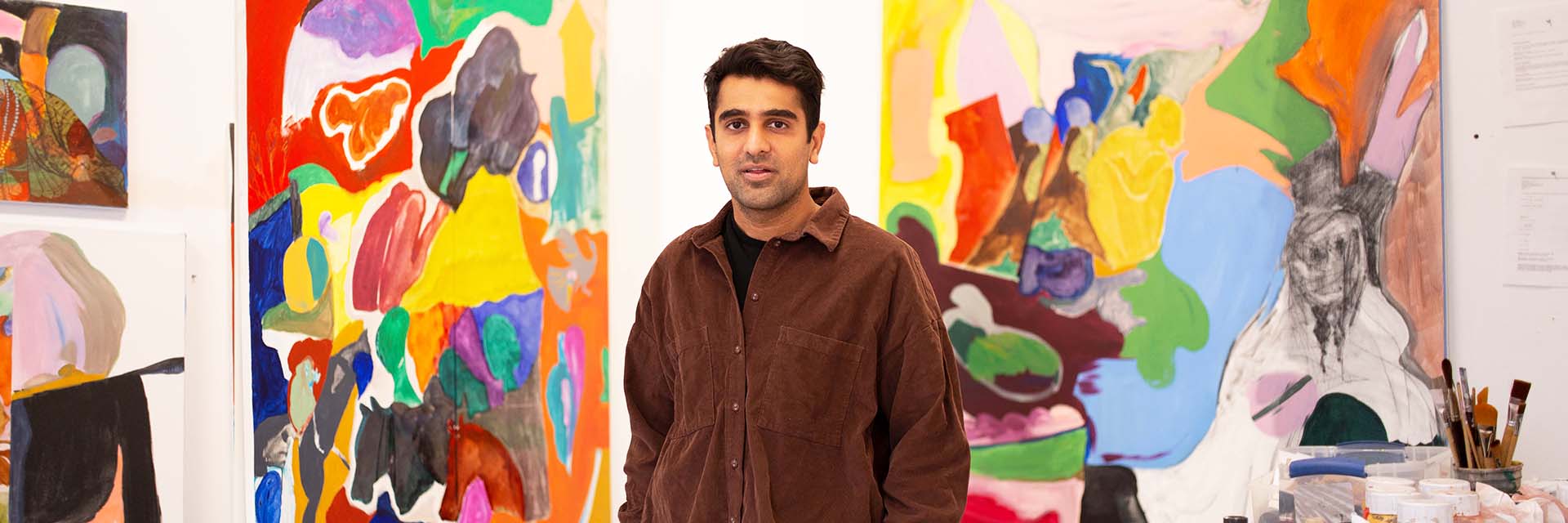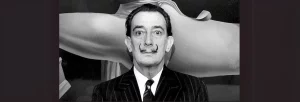(June 30, 2025) Pichwai, the intricate art form that illustrates tales of Shrinathji, has long remained tucked away in temples and private collections. But now, it’s finding new life on the global stage—thanks to Pooja Singhal, philanthropist and founder of Pichvai: Tradition & Beyond, whose unending passion for the preservation and innovation of the form has allowed it to evolve and stay relevant for contemporary audiences. Through her work, Pichvai has begun to resonate with art lovers across the world, from Delhi to Singapore. A US-returned MBA, Singhal chose not to follow a conventional corporate path. Instead, she turned her focus inward—towards India’s rich craft heritage. She launched RUH, a handloom brand that deepened her engagement with traditional textiles and became the starting point of her journey into art revival.
That journey now reaches a milestone with Feast, Melody and Adornment, a major exhibition at London’s Mall Galleries this July. With over 350 artworks on display, it’s the largest international showcase of Pichvai to date—bringing the visual and spiritual richness of this sacred tradition to a global audience. It’s also a proud moment for Indian art, which continues to find new voices and spaces on the world stage. “Since 2009, I’ve dedicated myself to researching, preserving, and reimagining the Pichwai art form, bridging traditional craftsmanship with contemporary art, and creating new opportunities for the artists from Nathdwara to thrive in today’s global art landscape,” she tells Global Indian.

Pooja Singhal
Introducing Pichwai: A Childhood Immersed in Sacred Art
Childhood memories are always not just cherished but also ones that leave a deep impression on oneself. It was no different for Pooja Singhal, who grew up in Udaipur, surrounded by rich artistic traditions, thanks largely to her mother, an avid collector who often welcomed Pichwai painters into their home.
As a child, Singhal remembers accompanying her mother on visits to Nathdwara in Rajasthan, where she was fascinated by the delicate brushstrokes of Pichwai painters working quietly in their studios. These early experiences quietly shaped her appreciation for craftsmanship and tradition, even if she didn’t fully realise it at the time. After school, she pursued an MBA in the United States, which broadened her perspective on business and design. Upon returning to India, she launched RUH, a handloom brand that deepened her engagement with heritage crafts. “It was only years later that those memories became the foundation for my work in reviving this beautiful, sacred art form. I realised the immense cultural value and artistry at risk of being lost,” she explains.
From Passion Project to Purpose: Finding Her Way into Pichwai
However, she entered the world of Pichwai almost by chance. When she launched RUH, she began commissioning a few artworks out of personal interest. “I soon realised the tradition was fading, undervalued and at risk. A 2013 exhibition in Chennai affirmed my instinct that this art needed to be preserved, reframed, and reintroduced,” she says. One of the key milestones of her career was restructuring the traditional artist training model into a collaborative atelier system at Tradition & Beyond, which helped revive the master-disciple tradition and fostered innovation. Curating large-scale exhibitions, presenting Pichwai art in collaboration with the well-established Gujral Foundation in a grand bungalow in Lutyen’s Delhi (2015) and presenting a 400-work showcase in Mumbai’s Famous Studios (2018) were pivotal in redefining Pichwai’s presentation for contemporary audiences.
Another significant achievement was formalising the market presence of Pichwai through gallery representation, moving away from informal sales channels. “Integrating multi-sensory experiences, like the traditional Chappan Bhog (a sacred platter of 56 diverse dishes integral to the worship of Shrinathji) at exhibitions, uniquely helped connect audiences with the art’s cultural context. Finally, initiating experimental series such as the Greyscale and geometric reinterpretations has expanded the Pichwai art form’s artistic vocabulary, ensuring its evolution while honouring its sacred roots,” she says.
View this post on Instagram
Beyond the Canvas: Rebuilding the Pichwai Ecosystem
At Pichvai Tradition & Beyond, she set out revive not just the visual language but the ecosystem behind it. “We restructured the creative process from the old father-son model to an atelier system where younger artists train under masters and collaborate on each piece. I focused on restoring original materials such as hand-ground mineral pigments and traditional cotton-silk fabric and reintroducing forgotten techniques like likhai (a delicate outlining technique that adds definition and depth, bringing the intricate details to life).
Equally important was reframing how the art is seen. Through large-scale exhibitions in Delhi, Mumbai, Singapore, and at the India Art Fair, I’ve worked to place Pichwai firmly within the contemporary art conversation, bridging devotion and design, heritage and modernity, to ensure its relevance for future generations,” she says. In fact, Pichvai Tradition & Beyond was the first traditional art form to be showcased at the Contemporary India Art Fair, an inclusion that led to the creation of a dedicated section for traditional arts at the fair ever since.

Taking Global: A Landmark London Showcase
She is now all set for her new show ‘Feast, Melody and Adornment’ at London’s Mall Gallerie from July 2 to 5, 2025, which marks a significant milestone in her journey with Pichwai art. “It’s the first time we are presenting the tradition to a global audience on this scale, showcasing 350+ works, and the location, right in the heart of London’s art district, allows us to engage a completely new audience. The show is a curated celebration of the artform’s visual richness and ritual roots, reinterpreted for a contemporary global context. The works we are showing span the original sacred works as well as contemporary reinterpretations, including our Greyscale series and architectural interventions inspired by the jharokhas of Nathdwara. It’s deeply gratifying to see this once temple-bound tradition find resonance in an international art capital. My hope is that this exhibition not only sparks appreciation for Pichwai’s craftsmanship but also opens conversations about how traditional art forms can evolve and remain meaningful across cultures and geographies,” she says.
View this post on Instagram
From Preservation to Empowerment: A Revivalist’s Vision
As a revivalist, her focus has always been twofold: to preserve the integrity of the Pichwai tradition and to ensure its relevance in today’s world. “When I began, many of the techniques were being lost, and artists that were originally based in Chitrakaron Ki Galli, the ‘Lane of Painters’ in Nathdwara, were drifting away due to lack of recognition and livelihood. By introducing an atelier model at Pichvai Tradition & Beyond, we moved away from the insular guru-shishya tradition to a more collaborative and sustainable system where younger artists train under experienced masters,” she explains.
The impact, she says, has been deeply encouraging. “This not only revived long-forgotten skills but also gave artists pride, purpose, and a sense of community. Many who had left the field have returned, and today, they see their work showcased at major institutions, both in India and internationally. It’s incredibly rewarding to see their confidence grow when they realise that they are not merely preserving the past but actively shaping the future of an art form with global resonance,” she adds.
Between Legacy and Innovation: Navigating a Fragile Ecosystem
One of her biggest challenges has been the delicate ecosystem of traditional art that she operates within. “The art form I work with has existed for over 400 years, passed down through generations and historically patronised and traded in a particular way. Introducing this into the contemporary gallery model, applying principles from the world of contemporary art to a form that has its own legacy, has required both careful disruption and deep reimagination. Managing the sensitivities of artists, traders, and even those who run art fairs has been no small feat. While there are shared elements between traditional and contemporary art practices, they function quite differently, and helping stakeholders understand and embrace that distinction is an ongoing journey,” she says.

Another challenge has been adapting to new geographies, understanding what resonates with different audiences and patrons across regions, and how to keep this patronage evolving. “Each time we take this art form to a new context, there is the question of how to ensure it remains relevant, resonant, and rooted, yet open to interpretation, while maintaining its authenticity,” she adds. Additionally, she plays multiple roles in this initiative as she commissions the works, manages, and sustains the atelier, acts as the gallerist and curator, and, in many ways, is also a patron. “Switching hats, sometimes several times a day, can be quite demanding, as each role requires a different mindset and a different set of responsibilities to ensure that I do justice to each of them. It is about creating an ecosystem where the art, the artists, and the audience can all evolve together,” she says.
Art with Purpose: A Passion Turned into Legacy
While art is what inspires and motivates her, she says that she has been fortunate to turn a personal passion into her profession. “I find real joy in working every day in a space I care so deeply about. Beyond that, the social impact of what I do is immensely fulfilling. When I began, the artist community had dwindled from around 4,000 to 5,000 people to barely 2,000; it was fading fast. To now see it running, thriving, and regaining its strength is a powerful motivator. I am also deeply moved by seeing Indian traditional art and heritage cross borders, being appreciated by the younger generation here, and finding new audiences abroad. It is a reminder that these forms still speak to people across cultures and time,” she says.
View this post on Instagram
For Pooja Singhal, the journey with Pichwai has never been just about art — it’s about identity, legacy, and creating space for tradition in a rapidly changing world. By reimagining an age-old form with respect and vision, she has not only revived a fading practice but also empowered a community of artists to dream bigger. As Feast, Melody and Adornment opens in London, it marks a new chapter—where a once temple-bound tradition finds its place on the global stage, resonating with audiences far beyond its origins.
- Follow Pichvai Tradition and Beyond on Instagram
ALSO READ | Viraj Mithani: The contemporary artist reclaiming Indian art



